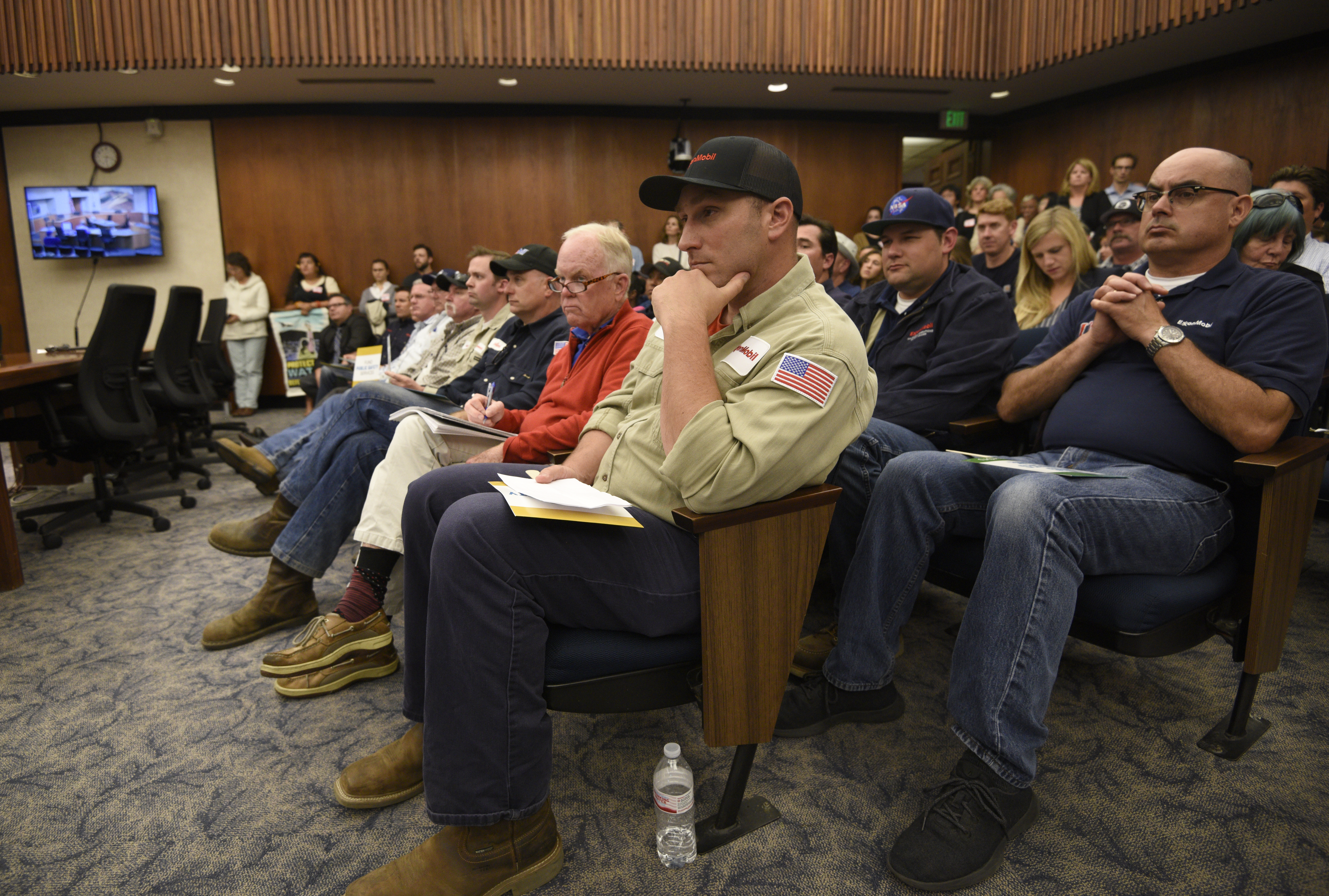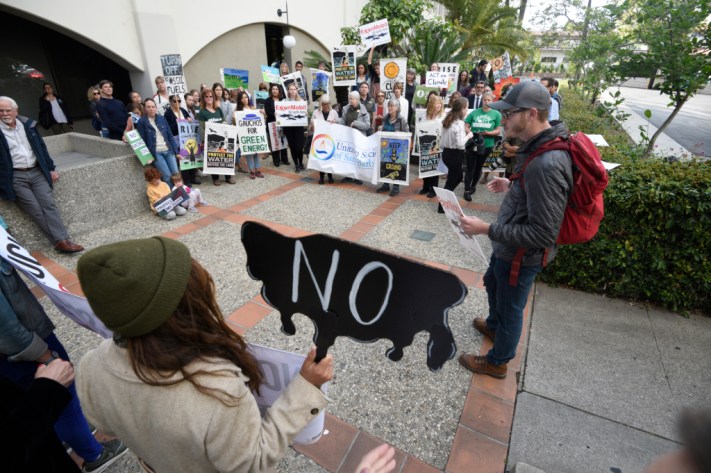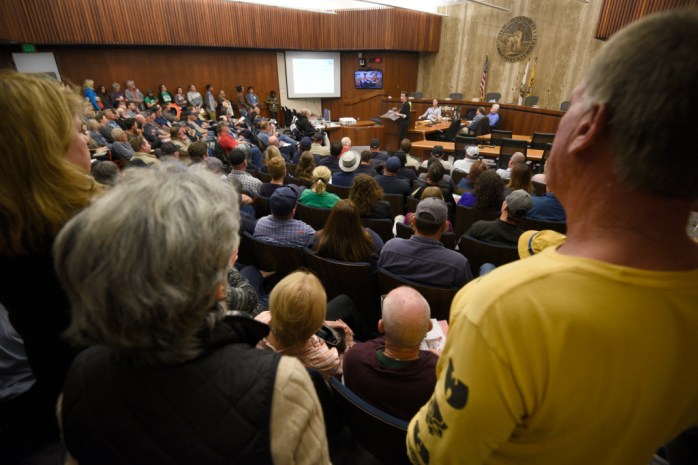(Most) Everyone Behaves During Packed Exxon Trucking Hearing
Company Workers and Environmental Activists Argue Over Platform Restart

Monday’s hearing on a trucking permit request from ExxonMobil had all the makings of a powder keg ready to blow — a stuffy room filled beyond capacity with environmentalists and oil workers dug into opposite sides of a hot-button issue. Surprisingly, few sparks flew and even fewer tempers were lost, though there was a definite sense of urgency in this regional energy debate. Just hours earlier, as many oil critics noted, the United Nations had released a sweeping study that said climate change was pushing more than a million plant and animal species toward the brink of extinction. The public meeting with the County Energy Division was the beginning of the county’s approval process. It is scheduled to reach decision-makers, first the Planning Commission, then the supervisors, in the fall.
The hearing was a chance for the public to weigh in on a new draft report that outlines the potential environmental impacts of Exxon’s proposal. The company wants to restart its three offshore drilling platforms and use tanker trucks to transport the oil inland as it waits for Plains All American Pipeline to replace the line that broke and caused the 2015 Refugio Oil Spill. The trucking would stop once the new pipeline was built or after seven years, whichever came first, unless the county extended the permit.

The proposal calls for the production of 11,200 barrels of crude a day (about one-third of Exxon’s production rate before the spill) that would be hauled by a maximum of 70 trucks operating 24/7. The trucks would use Calle Real and the Refugio-U.S. Highway 101 interchange to access the facility in Las Flores Canyon, then drive either to a pump near Santa Maria or further along through San Luis Obispo on Route 166, eventually reaching a transfer station in Kern County. Alternatives include limiting the number of trucks to 50 a day, stopping operations if a half inch or more of rain is predicted along the routes, and trucking to the Santa Maria station only. The report found that the most serious potential consequence would be a spill. Second to that were impacts to air quality and traffic.
Dozens of proponents, many dressed in uniforms sporting Exxon and American flag patches, said the permit would restart the flow of much-needed tax revenue to Santa Barbara’s coffers. In the 10 years before the shutdown, Exxon contributed more than $45 million in tax revenue, they noted. Since then, public schools like Santa Ynez Valley High and its $1.3 million deficit have struggled with budget shortfalls. They argued how safe and tightly regulated operations in the U.S. are compared to foreign countries with far fewer environmental concerns. Wouldn’t we rather produce oil responsibly here than buy it from polluted sources elsewhere?
Supporters also highlighted how the shutdown meant layoffs and transfers for hundreds of regional Exxon workers. The trucking would bring them back home, they said. “I get calls every day of the week from these displaced employees,” said Matt Foster, an offshore facilities manager. “Our livelihood is based on restarting.”

Santa Barbara’s environmental contingent raised the specter of yet another oil spill and asked why, as climate scientists are screaming for action, the county would support the production of more nonrenewable energy. They described Exxon as “deceptive” and highlighted the inherent danger of moving crude by truck, frequently recalling the spill during the Thomas Fire evacuation that closed Highway 101 and backed up panicked drivers for hours. Sending fleets of trucks along the narrow and winding Highway 166 is a bad idea, warned Phil McKenna with the Gaviota Coast Conservancy, that will end up impacting other communities.
Maggie Hall with the Environmental Defense Center attacked the report on technical grounds. She argued that it focused too narrowly on the trucking elements and failed to assess the impacts of Exxon’s operations in their entirety, and she called the report misleading. She insisted renewable alternatives be given more consideration. Jonathan Ullman with the Sierra Club pointed out that the company is the biggest producer of greenhouse gases in the county.
The evening’s only interruption came from anti-oil activists who unfurled a banner and chanted for a minute or so before slowly leaving.




You must be logged in to post a comment.